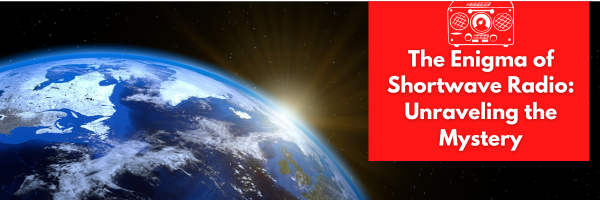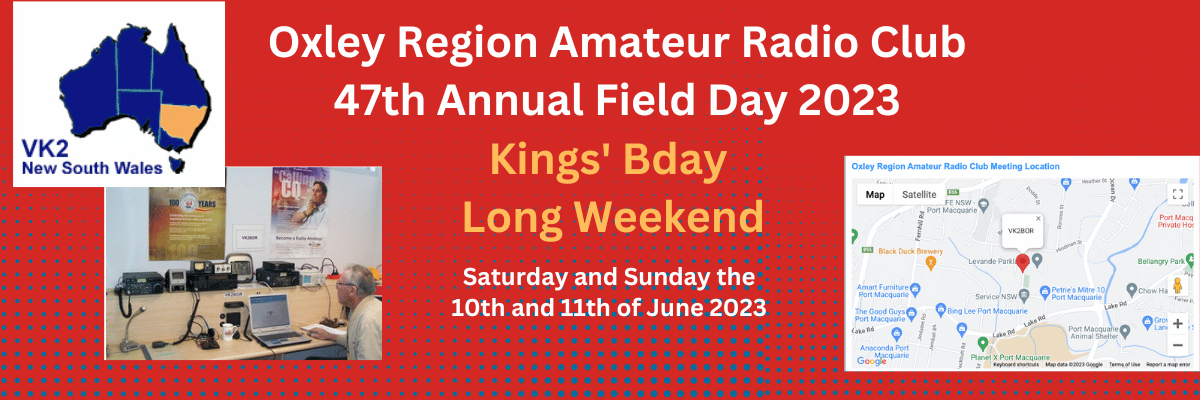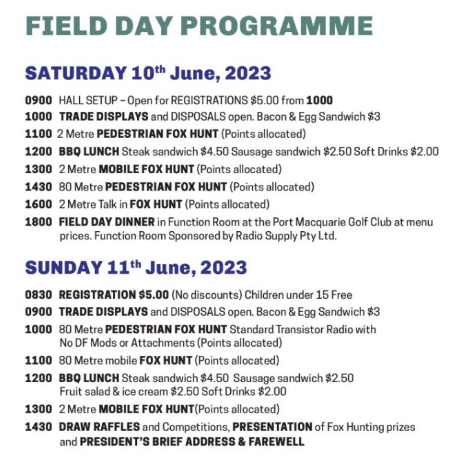
This blog is perfect to share with younger generations, be that grandkids, nieces, nephews, and friends! We even have some fantastic dot to dot drawings printed in the back of our shortwave radio listener guides that come free with all radios purchased on our webstore. Perfect for the upcoming school holidays!!!
Hey there, curious minds! Are you ready to embark on a scientific adventure that combines learning, exploration, and a touch of magic? Today, we’re diving into the captivating world of shortwave radio and discovering how this fascinating technology can be an educational powerhouse for kids like you. So, buckle up, grab your lab coats, and let’s dive into the science of shortwave radio!
What is Shortwave Radio?
Shortwave radio is a form of radio communication that uses high-frequency signals to transmit messages over long distances. Unlike FM or AM radio, shortwave signals can bounce off the Earth’s atmosphere and travel across continents, making it possible to tune in to stations from around the world.
The Science Behind Shortwave Radio:
Shortwave radio operates on a principle called “skywave propagation.” It involves the reflection and refraction of radio waves in the Earth’s ionosphere, a layer of charged particles high in the atmosphere. When shortwave signals encounter the ionosphere, they can be refracted or bounced back to the Earth’s surface, allowing them to travel far beyond the transmitter’s line of sight.
Exploring Radio Wave Behavior:
Understanding the behavior of radio waves is like uncovering a secret code. With shortwave radio, you can experiment and observe how different factors affect signal strength and quality. For instance, you can build your own simple antennas using everyday materials to discover how their size, shape, and positioning affect reception. It’s a hands-on way to learn about physics, electromagnetism, and the importance of engineering in communication systems.
Language Learning and Cultural Exploration:
Shortwave radio provides a unique opportunity to explore different languages and cultures from the comfort of your own home. Tune in to stations broadcasting in various languages and experience the beauty and diversity of global communication. Immerse yourself in different accents, music, news, and stories, expanding your language skills and developing a global perspective.
Building Emergency Preparedness Skills:
Shortwave radio is not just about science and culture; it also plays a vital role in emergency communication. During emergencies or natural disasters, traditional communication networks may fail, but shortwave radio can remain operational. Learning how to use and listen to shortwave radios equips you with valuable emergency preparedness skills. It empowers you to stay informed, connect with others, and even assist in disseminating vital information during times of crisis.
Igniting a Lifelong Passion:
By exploring the science of shortwave radio at a young age, you may ignite a passion for science, technology, and communication that will last a lifetime. You could become an amateur radio operator, build your own radios, or even pursue a career in engineering, telecommunications, or physics. The possibilities are as vast as the airwaves themselves!
So, young adventurers, as you journey through the captivating world of shortwave radio, remember that science is all around you, waiting to be explored. By tinkering with antennas, observing radio wave behavior, embracing cultural diversity, and preparing for emergencies, you can become a true radio explorer. Unleash your curiosity, ask questions, and let the magic of shortwave radio inspire you to reach for the stars!
Are you ready to embark on this exciting scientific journey? Grab your headphones, tune in to the frequencies of knowledge, and let the science of shortwave radio whisk you away to places both near and far.
Happy exploring, young scientists!

In a world driven by advanced technology and instantaneous communication where it is common to see people are walking around staring at their phones as a way of communication and entertainment, it’s easy to overlook the seemingly oldschool domain of shortwave radio. While smartphones, social media, and streaming services dominate our lives, shortwave radio quietly persists as a captivating and enigmatic medium. Despite its long history and unique characteristics, shortwave radio remains mysterious to many people today. We are passionate about sharing as much about this hobby as possible. Here are some of the reasons we love this sometimes mysterious medium which continues to capture the imagination of enthusiasts around the globe.
1.The Wavelength Wilderness: Shortwave radio operates on high-frequency bands, typically ranging from 1.6 to 30 MHz. Unlike traditional radio broadcasting, these signals have the remarkable ability to travel long distances by bouncing off the Earth’s ionosphere. This characteristic enables listeners to tune into broadcasts from far-flung corners of the world. However, the unpredictable nature of ionospheric propagation adds an element of uncertainty, as reception conditions fluctuate depending on atmospheric conditions, solar activity, and time of day. This unpredictability creates an air of mystery and adventure, as dedicated listeners attempt to catch elusive transmissions from distant lands.
2.A Global Portal of Voices: Shortwave radio is renowned for its capacity to connect people across continents, cultures, and languages. It serves as a gateway to alternative perspectives, unheard voices, and diverse narratives. Many international broadcasters utilize shortwave radio to reach audiences in regions where access to the internet or other forms of media may be limited. Tuning into these broadcasts offers a glimpse into unfamiliar cultures, political climates, and social issues, fostering a sense of curiosity and intrigue. The broad spectrum of content, from news and current affairs to music and cultural programs, adds to the allure and mystique of shortwave radio.
3.Spy Numbers and Clandestine Activities: During the Cold War, shortwave radio gained notoriety for its use in espionage and clandestine activities. Spy agencies and governments utilized coded messages, known as “numbers stations,” to communicate with their operatives in the field. These eerie and cryptic broadcasts, often consisting of synthesized voices or monotone readings of numbers, remain a subject of fascination and speculation. The cloak-and-dagger world of shortwave espionage adds an element of intrigue and secrecy, perpetuating the air of mystery surrounding the medium which continues today.
4.The Art of Listening: Unlike modern digital platforms, shortwave radio requires active participation from the listener. Tuning into frequencies, adjusting antennas, and carefully fine-tuning the receiver are skills that dedicated shortwave enthusiasts have mastered. This active engagement and the inherent limitations of shortwave reception make it a more involved and immersive experience than passively scrolling through a digital playlist. The quest for the perfect signal, the joy of discovering a distant station, and the shared experiences within the shortwave community create a sense of camaraderie and exclusivity that keeps the allure of shortwave radio alive.
5.Nostalgia and Analog Charm: In an era dominated by sleek digital devices and seamless connectivity, shortwave radio represents a nostalgic connection to simpler times. The crackle of the airwaves, the warmth of the analog dial, and the feeling of anticipation as you search for a station evoke a sense of bygone charm. The fascination with retro technology and the desire for a more tangible and tactile experience have contributed to the enduring appeal of shortwave radio among collectors, hobbyists, and enthusiasts.
Shortwave radio, with its long-distance reach, cultural diversity, historical intrigue, and active engagement, continues to captivate a dedicated following in the digital age. Its mysterious nature, inherent limitations, and the unique experiences it offers contribute to its enduring appeal. As we navigate an increasingly interconnected world, shortwave radio
Here at Tecsun Radios Australia we are proud to support this hobby and introduce it to more people on a daily basis through our store, blogs, newsletter, and social media.

This Kings Birthday Long Weekend, Saturday and Sunday the 10th and 11th of June 2023, the Oxley Region Amateur Radio Club cordially invites visitors and members to attend the ORARC 47th annual Field Day.
This is a two day event that includes fox hunts on both the Saturday and Sunday. Browse the disposals or take your own gear to sell ( no commissions taken).
There will be a barbeque lunch on both days with a bacon and egg breakfast available on Sunday morning.
Sunday is the trading day. The Field Day dinner is at 5 pm on the Saturday night in the Seaview Room at the Port Macquarie Golf Club with a menu to suit all tastes. The Wauchope Showground permits camping and is pet friendly. For two people an RV or caravan is $20 per night and a tent is $10 per night with power and the use of toilets and hot showers. Contact the on-site caretaker 0475 111 074 for bookings.
The June 2023 Friday Night Get Together will take place at 7 pm on Friday the 16th of June 2023 in the SES Building, Central Road, Port Macquarie.
These field days are a great excuse to get out, talk to like-minded radio enthusiasts, and possibly even pick up a radio or some great gear to add to your radio shack.
The aim of the Oxley Region Amateur Radio Club is to foster the hobby of Amateur Radio and associated electronics, to encourage persons interested in the scientific development of radio communications and associated electronics, and to provide a central meeting point for people interested in Amateur Radio and associated electronics where they may receive and give instruction and advice on matters pertaining to Amateur Radio Communications.


For more information, head to the official event page https://www.orarc.org/?p=70424


